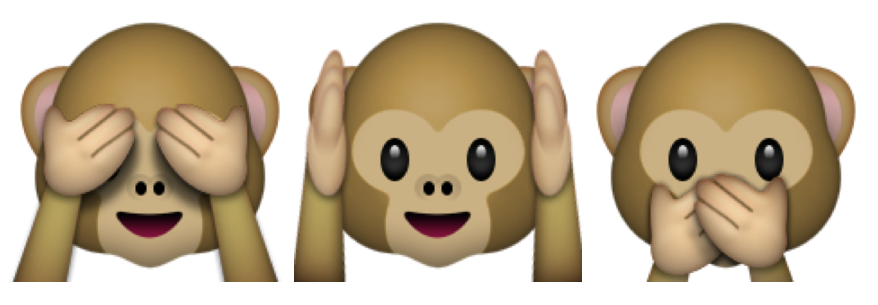The Blind, the Deaf, the Mute

Four friends named A, B, C, D were challenged to play a weird "Guess-A-Word" game. The 4 contestants would be separated into 4 different chambers, where they couldn't see or hear each other unless permitted, with the following conditions:
- One of the contestants would be blindfolded such that he could not see anything but could still listen and speak well. (The Blind)
- One would be ear-plugged such that he could not hear the others but could still see and speak a word to others. (The Deaf)
- One would be mouth-sealed such that he could not speak but could see and listen well. (The Mute)
- The remaining one would not be constrained by any means at all and perceive all senses. (The Normal)
Initially, none of them knew who was which. Then the game would proceed as follows.
First, A would be secretly shown a word in text. They would then need to verbally tell B by voice. (The walls made B only would hear this. B couldn't see A even B was not blind, so A couldn't communicate using sign language or anything else though if A was deaf and B was blind, B could still hear A's word.) B would then have to say the word aloud to get a point.
Next, it's B's turn telling a new word to C, with the same rules as above. Then it's C's turn telling D, and lastly D's turn telling A.
After the game concluded, the four friends didn't get any point. They then discussed the game:
B : That was a hard game!
A : Indeed! I wonder what word you've got, C?
C : Not a chance. I've only known one word in this game. I'm going to keep it my secret.
D : Such a pity. I wish I could know your word, C.
What identities were A, B, C, D during the game? Let 1 = The Blind, 2 = The Deaf, 3 = The Mute, and 4 = The Normal; enter your answer as the identities of A, B, C, and D in order. For example, if you think A is The Blind, B is The Deaf, C is The Mute, and D is The Normal, then you should enter as your answer.
The answer is 3142.
This section requires Javascript.
You are seeing this because something didn't load right. We suggest you, (a) try
refreshing the page, (b) enabling javascript if it is disabled on your browser and,
finally, (c)
loading the
non-javascript version of this page
. We're sorry about the hassle.
To earn no points despite having the normal contestant within a pair, his teller must be either blind or mute, for the deaf one can still see and tell a word to him. Thereby, if the normal one is a teller with no success, his listener must be either deaf or mute, for the blind one can still listen and guess the word. Then there are 3 possible scenarios:
As shown, only the second scenario in the middle works because if the deaf one tells the blind, he can still hear the word and can answer correctly.
As such, after knowing that they earn no points, the four friends will already know such order, as each of them knows his own status. Following this cycle, the blind can not possibly see his word and can not hear anything from the mute, so he knows no words. For the normal one, he will not know the blind's word as the blind though the normal will know his 1 word. Then the deaf will not hear the normal's word but can see his own and will know 1 word. Finally, the mute can hear the deaf's word and can see his own word, so he's the only one who knows 2 words.
To answer the question, we just need to know which is which by analyzing their conversation. Since C knows only one word, he can't be blind or mute: only the normal or the deaf knows one word. However, if C is deaf, D will be mute and can then know his word. Thus, C is normal, making D deaf, A mute, and B blind, respectively.